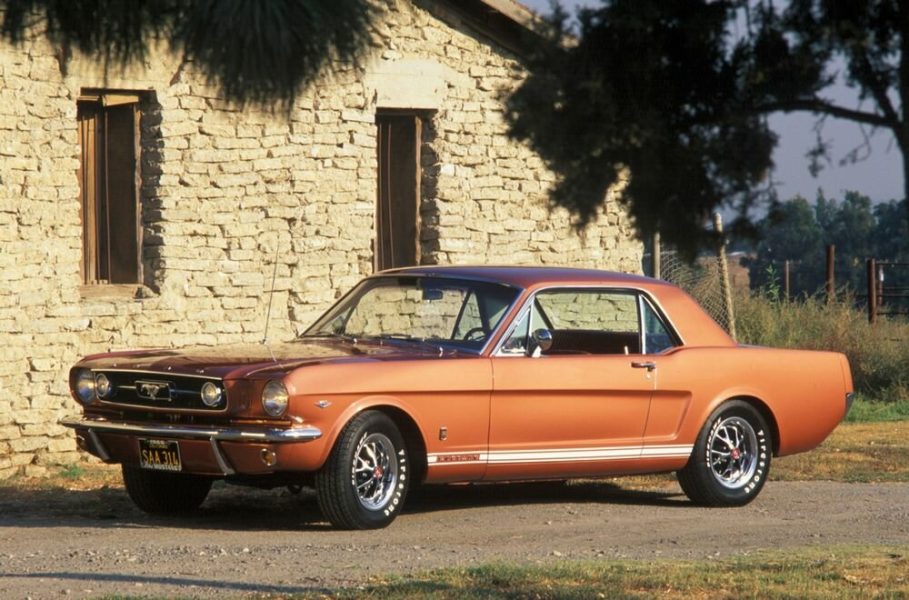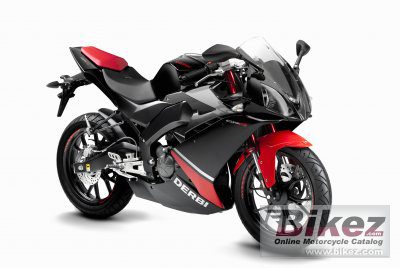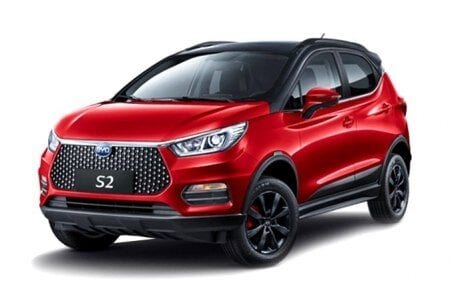
Muscle car vs pony car - what's the difference?
Content
When we say muscle car, what picture comes to your mind? You have a moment, so think carefully. Already? Then know that most likely you are thinking of a pony car.
What's the difference?
Muscle car and pony car (in Polish we could call them “muscles” and “ponies”) are products of American automotive thought. The first ones are larger - both in terms of body (at least medium, and preferably a full-size sedan / coupe), and in terms of engine (large V8 is simply necessary here). Pony cars, on the other hand, are more compact and do not need such a powerful engine under the hood.
Want to know more about these types of vehicles? This is good because we are dedicated to it. Read it and you will no longer have doubts about what is what.
Pony car - what is it?
The birth of the pony car segment is credited with 1964, when the first Ford Mustang (1964.5) debuted. It is from its name that this type of car originated.
After all, a Mustang is a horse, right?
However, no new automotive genre would have become popular if its ancestor had not been successful. A huge success because the 1964.5 Ford Mustang was selling at a breakneck pace. It was a product remembered by consumers as "one of a kind". Something that you should have. “
There were reasons for that, of course.
The car was sporty, youthful and generally attractive. The price was not a deterrent either, because it was $ 2, which in today's dollars would give you about $ 300. Ideal for the middle and even lower class of society that the then Thunderbird could not afford.
Ford Mustang 1964.5 gave an alternative to everyone who dreamed of a great car.
As it quickly turned out, the producer hit the jackpot. Ford sold over 400 Mustangs in its first year. It was so successful that other companies quickly began work on their own version of the pony car. They wanted to cut themselves at least a piece from this cake.
What was the effect of this?
In a short space of time, a diverse fleet of American cars has emerged, distinguished by style, speed and, just as important, affordability. As for the pony car engines, they were also different. Often smaller (eg V6), but there were also versions with larger V8s. In the latter case, the car could be called a pony muscle car or a children's muscle car.
Some of the most popular examples of this type of car are:
- Camaro,
- Barracuda,
- Challenger,
- Firebird.
Despite this, many people mistakenly refer to them as muscle cars.
American muscle car - what is it?
Unlike the "pony," the history of the muscle car does not begin with any clear point or specific model. Therefore, they do not have well-defined features that the prototype would install (as the Ford Mustang did for the pony car).
However, despite this, lovers of "fibroids" have come to a certain consensus.
Most consider the 88 Oldsmobile Rocket 1949 to be the first of this type of vehicle. It featured a large V8 engine that the manufacturers squeezed into a small and lightweight body. In addition, by today's standards, the car did not stand out in anything special. Oldsmobile Rocket 88 developed a top speed of about 160 km / h and accelerated to a hundred in less than 13 seconds.
Perhaps this is not enough today, but in 1950 such figures were impressive.
The car was never as successful as the Mustang, but its power exceeded the rest of the competition. It wasn't until the mid-50s that the first models appeared, which overthrew the Rocket 88 in this regard.
So what are the characteristics of an American muscle car?
Most often they can be found in the two-door coupe version (this body type gives the best performance) with rear-wheel drive. However, their most important feature is too much power for the dimensions of the car. For this reason, "fibroids" are not proud of handling (on the contrary, they are very difficult to maneuver). On the other hand, they outperform other types of cars in the same field - they reach idiotically high speeds in a straight line.
This makes them the number 1 choice when it comes to drag racing (go as fast as possible on a straight section of track).
In any case, muscle cars do not have a single, strict definition. Therefore, this type can be talked about every time the manufacturer decides to install a huge and powerful engine in a car with a light body. However, most fans agree that in addition to power, the car should also be big enough.
Modern muscle car
As for the modern muscle car, many argue that the Dodge Challenger and Dodge Charger are the only true representatives of the genre. Only these models have retained the characteristic features of the American "fibroids".
What about other brands?
Well, the line between a muscle car and a pony car has become very blurred in recent years, so today it is difficult to distinguish from each other. In fact, the Mustang Shelby GT500 could be classified as a "muscle", even though the brand spawned all the "ponies".
How are muscle cars and ponies different from a sports car?
Now that you know what a muscle and a pony car are, the question in your head may be: “Okay, what do these types have to do with sports cars? Are we dealing with the same? “
The question is absolutely justified. After all, sports cars are at breakneck speed too.
However, the main difference is that in a sports car, grip and handling are the most important things. Engine power plays a second role here. The designers made sure that the cars were aerodynamic, had a low center of gravity and good handling. In addition, most of them are front-wheel drive.
Sports cars enter corners quickly and safely, passing them without any problems. Unlike a muscle car, with which the driver will have serious problems on these sections of the track.
Pony car?
Ponies are somewhere in between the species listed above. They try to balance powerful power with good steering.
Cheap muscle car and pony car - a few examples
Wondering if you can afford a classic muscle car? It is true that there are several models that can be purchased relatively cheaply, but the key word here is "relatively". In terms of PLN, you will pay at least 20. This is about the same price as a cheap muscle car or pony car.
Read on and see for yourself.
Dodge Dart Sport (min. $ 6000)
Another Dodge muscle car joined the competition with another muscle car in 1974. In the most powerful version, it had a V8 engine with a volume of 5,9 liters and a power of 245 hp. However, this edition even today costs a lot, about $ 20.
Fortunately, you can opt for the weaker model with a 8-liter V5,2 engine and 145bhp. It accelerates to a hundred in just 10 seconds, and its top speed is 180 km / h.
You can buy this version for as little as $ 6000.
Chevrolet Camaro IROC-Z (min.7000 USD)
The name of this Camaro model is short for International Race of Champions. For many years it topped the list of "best cars" of the era. In 1990, the IROC-Z showed itself in the most powerful version - with an 8-liter V5,7 engine with a capacity of 245 hp. It accelerates from 6,1 to 230 km/h in XNUMX seconds and has a top speed of around XNUMX km/h.
A model in good condition can cost up to several thousand dollars, but you will also find offers for $ 7000 as well. Not bad for a Chevrolet muscle car / pony.
Ford Maverick Grabber (min.9000 USD)
While the Maverick is a bit tricky to qualify as a muscle car, the Grabber brings it closer to the genre. The sporty and elegant looks, coupled with the 8-liter V5 that joined the model in 1975, did the trick. The car has a power of 129 hp, accelerates to a hundred in just 10 seconds, and its top speed is about 170 km / h.
The performance may not be stunning, but the car makes up for it in looks - and price, because you can buy it for as little as $9000.
Pontiac Firebird / Trans Am (min. $ 10)
One of the most recognizable American models. Great looks, a film career and a powerful engine made the Firebird very popular in the 70s. Under the hood is a 8-liter V4,9 with 135 hp. The car accelerates to a hundred in 13 seconds, and its maximum speed is about 180 km / h.
The Trans Am version may be difficult to obtain, but you can get one for as little as $ 10.
Ford Ranchero (min. $ 13)
Finally, we left behind an unusual muscle car - the Ford Ranchero. Theoretically, this is a pickup truck, but based on the Ford Torino and Fairline. In addition, the manufacturer put a really powerful engine under the hood. Which? V8 with a volume of 5,8 liters and a power of 240 hp. The car accelerates to hundreds in 9 seconds and has a top speed of 185 km/h.
While this is a true classic of the American car industry, it is not nearly as popular. Hence its relatively low price, as you can buy it for as little as $ 13.
Muscle car vs pony car summary
Although all the categories of cars that we wrote about today often get confused in the minds of car enthusiasts, they actually differ in several areas. Each has its own advantages and disadvantages.
As a reminder:
- the muscle car is powerful, but with poor handling;
- the sports car has excellent handling, but lacks the brute power that is characteristic of a "muscular" engine;
- A pony car is a cross between the above because it offers better handling than a muscle car, but at the same time it roars a lot louder than sports cars.
This in some way explains why ponies have become so popular among American drivers. They not only connect the two worlds, but they also do it in an accessible way.
On the other hand, however, the boundaries between these categories in the modern world have become blurred. As a result, sometimes even the greatest experts in the field have trouble deciding whether a given model is more muscular or a pony car. Things are good? Let everyone answer for himself.

